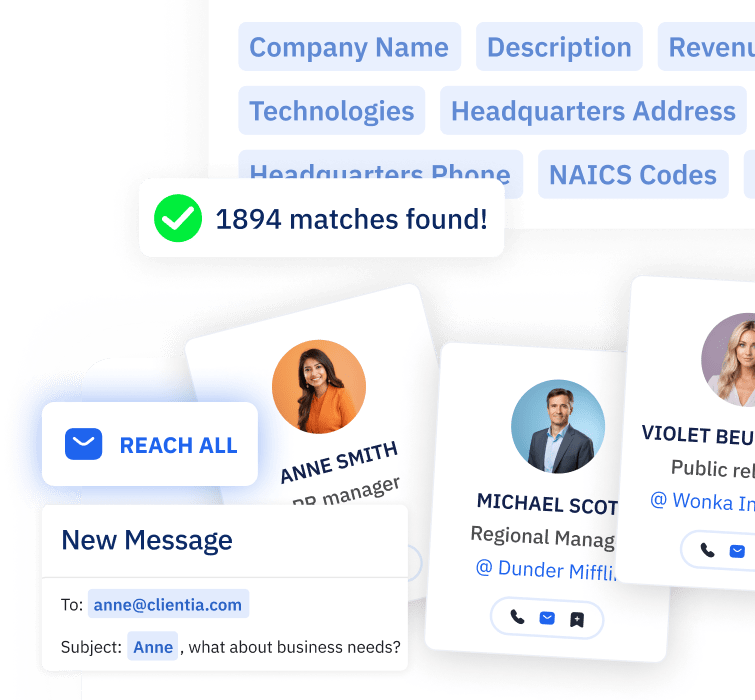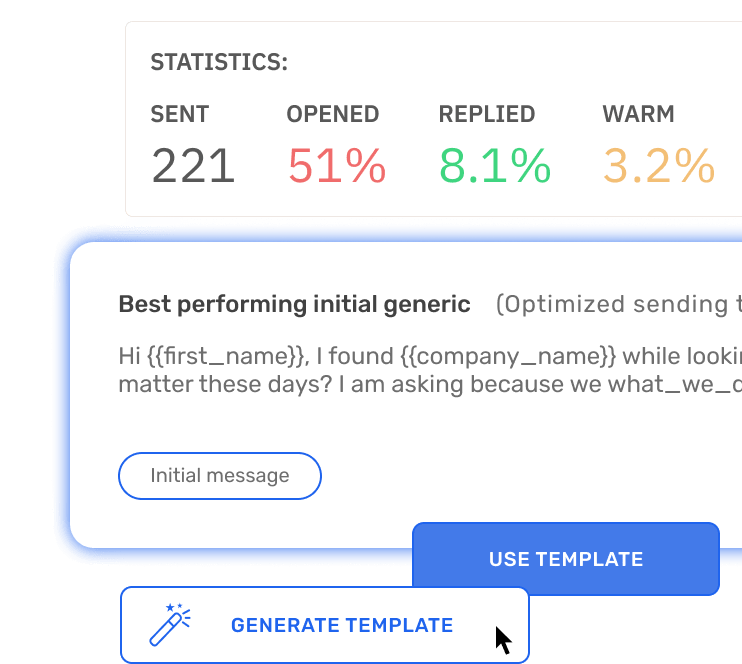Sales automation has become an indispensable aspect of modern business strategies, shifting the paradigm of traditional sales methods to a more dynamic and result-oriented approach. Beyond a buzzword, sales automation represents the convergence of various technologies aimed at enhancing sales activities and productivity. The advancements in this field are not only transforming the roles of sales teams but also redefining the engagement with customers. From the first contact point to the closing of a deal, automation is streamlining processes and ensuring that sales representatives can focus on what they do best—sell.
The evolution of sales automation has been rapid, fueled by the emergence of sophisticated software solutions that empower businesses to automate repetitive tasks, manage customer relationships more effectively, and gather insights into their sales strategies. This progression towards automation in sales is not just a trend; it’s a decisive factor in the survival and growth of businesses in a competitive market.
Seek, pick, and reach
Connect with your potential customers
- 180m+ contacts
- Advanced filtering
- Multichannel sequences
- CRM integrations
TL;DR
- Sales automation is reshaping traditional sales approaches, streamlining processes, and allowing sales teams to concentrate on selling by utilizing various technologies.
- Artificial Intelligence (AI) in sales automation enables data-driven decision-making and personalization in customer interactions, significantly improving lead quality and conversion rates.
- Essential components of sales automation include CRM software, email automation, social media management, lead generation systems, and analytics, all crucial for efficient sales lifecycles.
- The adoption of sales automation offers benefits such as enhanced efficiency, data-driven insights, and improved lead management, contributing to increased sales productivity and customer engagement.
- Sales automation is integral to every stage of the customer journey, offering optimized engagement and a cohesive experience that builds trust and loyalty.
- Integration with CRM systems is fundamental for maximizing the impact of sales automation, allowing for unified customer data management and improved sales strategies.
- Specific sales processes such as prospecting, lead nurturing, and deal closing can be automated for greater efficiency, allowing sales reps to focus on building relationships and closing deals.
- Innovations in AI, machine learning, and predictive analytics continue to advance sales automation, offering even more refined and customer-aligned sales practices.
- Selecting the right sales automation software involves considering usability, scalability, real-time analytics, integrations, and support features to enhance sales operations.
- Sales automation can be tailored to fit businesses of any size, with small businesses benefiting from scalable, cost-effective solutions and large enterprises leveraging comprehensive, integrated systems.
- Automating sales reports and analytics provides real-time data for agile decision-making and performance tracking, while enhancing sales outreach ensures consistent and personalized communication with prospects.
- Data-backed decision-making, enabled by sales automation tools, allows for targeted, strategic sales approaches, improving the odds of successful conversions.
- Streamlining the sales pipeline through automation aids in managing prospects efficiently, nurturing leads, and tracking deal progress for better sales performance.
- Leveraging sales automation for customer retention involves using automated tools to deliver personalized customer service and retain a satisfied and loyal customer base.
- Challenges in implementing sales automation include aligning new systems with existing processes and ensuring team adoption, which can be managed with strategic planning and training.
- Future trends in sales automation suggest deeper AI integration for predictive analytics and conversational AI, emphasizing the importance of staying current with industry advancements.
The Role of AI in Sales Automation
The incursion of Artificial Intelligence (AI) into sales automation is more than just a technological leap; it represents a paradigm shift in how sales processes are perceived and implemented. AI algorithms are adept at analyzing vast amounts of data, identifying patterns, and predicting outcomes, which enables sales teams to make data-driven decisions and personalize customer interactions like never before.
Sales professionals estimate they save around 2 hours and 15 minutes daily using AI or automation tools for manual tasks such as data entry and scheduling. Research suggests that players investing in AI see a 10-20% sales ROI boost.
Source: hubspot.com
Moreover, AI-driven tools are redefining the efficiency and accuracy of sales activities. From lead scoring to predictive analytics, sales representatives are now equipped with insights that were once beyond reach. The integration of AI in sales automation tools has not only improved the quality of leads but also the rate of conversion, empowering businesses to track, nurture, and engage with prospects in an efficient and targeted manner.
| AI Applications in Sales | Benefits |
| Lead Scoring | Higher conversion rates |
| Email Marketing | Personalized customer outreach |
| Chatbots | Improved customer support |
| Predictive Analytics | Better decision-making |
| Sales Forecasting | Accurate revenue predictions |
Implementing AI into the sales process has revolutionized how businesses interact with potential and existing customers, leading to streamlined sales cycles and enhanced customer experiences.
Key Components of Sales Automation
The crux of sales automation lies in its components, each playing a critical role in the overall efficacy of the system. The key components include CRM software, email automation tools, social media management, and lead generation systems. Among these, CRM platforms stand out as the central hub from which all sales automation activities emanate.
42% of teams using a CRM use it to automate meeting scheduling, and 36% use it to automate quote generation.
Source: hubspot.com
Another vital component is analytics, which provides valuable insights into customer behavior and sales performance. It is within these elements that the lifecycle of a sale—from prospecting to closing—is nurtured and optimized.
- CRM Software: Manages leads, customer interactions, and sales pipelines.
- Email Automation: Automates email campaigns and follow-ups.
- Social Media Management: Streamlines management and engagement on social platforms.
- Lead Generation Systems: Captures and processes information on potential leads.
- Analytics: Delivers data-driven insights and metrics for strategic planning.
Understanding and implementing these components strategically can significantly enhance the sales process, providing businesses with the necessary tools to boost sales efficiency and outcomes.
| Component | Description |
| Software Solutions | Applications tailored to execute various sales-related tasks automatically. |
| Data Analytics | Tools for interpreting sales data to guide decision-making. |
| Lead Management | Systems that track and nurture potential clients through the sales pipeline. |
| AI Algorithms | Machine learning algorithms that refine the sales process through predictive analytics. |
| Workflow Design | The outlining and automation of sales procedures to ensure seamless execution. |
| Integration | Harmonious operation of sales tools alongside existing CRM and business solutions. |
Benefits of Sales Automation
Sales automation extends a plethora of advantages to businesses that adopt its systems. It simplifies complex sales processes, creates cost-efficiency through the reduction of manual tasks, and enhances customer relationships through timely and personalized communication.
| Benefits of Sales Automation | Explanation |
| Enhanced Efficiency | Automating repetitive tasks frees up time for sales teams |
| Improved Lead Management | Nurturing leads through automated sequences leads to better lead quality |
| Increased Sales Productivity | Sales reps can focus on selling rather than administrative tasks |
| Data-Driven Insights | Access to analytics helps in making informed business decisions |
| Consistent Customer Engagement | Ensuring consistent communication with prospects and customers |
| Scalability | Ability to handle increased volume with no added pressure on sales teams |
With these benefits, it’s clear why businesses are quickly integrating sales automation into their core sales strategies. It not only aids in driving sales but also contributes to a more sustainable and resilient sales model.
Sales Automation in the Customer Journey
Sales automation plays a pivotal role at each stage of the customer journey, from awareness to the post-purchase phase. As potential customers interact with the brand, it’s imperative that each touchpoint is optimized to guide them effectively towards a purchase while ensuring a seamless and engaging experience. Through automated lead nurturing campaigns, personalized content distribution, and timely follow-ups, businesses can create a customer journey that not only educates and informs but also builds trust and fosters long-term loyalty.
Moreover, by automating tasks such as lead scoring and segmentation, companies can deliver highly-targeted messages that are relevant to each customer’s stage in the journey. This approach not only streamlines the workflow for the sales team but also enhances the overall customer experience.
- Awareness: Automated content delivery to educate potential buyers.
- Consideration: Tailored responses and timely engagement to pique interest.
- Decision: Personalized offers and follow-ups to facilitate the buying decision.
- Retention: Customer support and recurring communications to encourage loyalty.
By interweaving automation into these stages, businesses elevate the customer journey from a series of transactions to a cohesive, enjoyable experience.
Integration with CRM Systems
For sales automation to truly drive value, its integration with CRM systems is fundamental. A CRM system acts as the backbone, storing all customer data and interactions which can then be leveraged by the sales automation tools to personalize engagements and streamline processes. The success of sales automation hinges on how well it works in tandem with the CRM, ensuring that no data falls through the cracks and that each sales activity is tracked and optimized for maximum impact.
leave no lead unexplored
Every potential client within reach
- 180m+ contacts
- CRM integrations
- 23 Prospect filters
- 15 Company filters
This harmonious integration allows for consistent messaging, accurate forecasting, and the ability to draw actionable insights from a unified view of the customer. When the communication between sales automation tools and CRM is seamless, businesses can expect an uptick in efficiency and a clearer understanding of their sales funnel.
| Integration Advantage | Description |
| Data Consolidation | Centralizing customer data for improved access and analysis. |
| Uniform Processes | Ensuring consistent sales processes across technologies. |
| Collaborative Synergy | Facilitating team collaboration via shared sales insights. |
| Analytics Access | Providing immediate access to analytics for agile responses. |
| Personalized Contact | Customizing communications fueled by comprehensive data insights. |
34% of CRM-utilizing teams automate post-meeting follow-ups.
Source: marketsplash.com
Automating Specific Sales Processes
Sales processes, ranging from prospect identification to lead nurturing and closing deals can be automated to bring unprecedented levels of efficiency. By implementing automated sales prospecting, businesses eliminate the mundane task of manually scouring for potential leads, and instead, employ systems that deliver pre-qualified leads right to their inbox.
Email campaigns, an essential part of any sales strategy, can be automated to ensure that follow-ups are timely and contextually relevant. The power of email automation lends itself to maintaining a robust connection with prospects without investing manual hours into crafting individual emails.
- Prospecting: Leveraging tools to discover and attract viable leads.
- Lead Nurturing: Deploying drip campaigns that guide leads through the sales funnel.
- Appointment Scheduling: Using scheduling software to automate meeting arrangements.
- Closing Deals: Utilizing e-signature and contract management platforms for seamless deal finalization.
By automating these specific sales processes, sales teams can concentrate on developing relationships and closing deals, while technology takes care of the heavy lifting.
Visit the in-depth blogs on sales automation benefits and AI integration in sales for more insights.
Innovations in Sales Automation
The frontier of sales automation is continually being pushed forward with innovative breakthroughs that promise to further refine the sales process. With developments in AI, machine learning, and predictive analytics, the decision-making process becomes more efficient, and sales practices become more aligned with customer needs and market dynamics.
Emerging technologies such as voice-based CRM interaction and AI-driven content generation are making headways, offering sales teams intuitive and efficient methods for engaging with prospects. Virtual reality (VR) and augmented reality (AR) are also beginning to find their place in sales automation, providing immersive and interactive experiences for clients.
| Innovation | Impact on Sales |
| AI and Machine Learning | Enhanced lead scoring and personalized customer interactions |
| Predictive Analytics | Accurate forecasting and strategic planning |
| Voice-based CRM | Hands-free data input and streamlined access to information |
| VR and AR | Engaging product demonstrations and immersive client experiences |
These innovations anchor the continuous shift toward creating sales ecosystems that are not only streamlined but also welcoming and engaging for customers.
Sales Automation and AI Tools
The synergy between sales automation and AI cannot be overstated. A myriad of tools is available in the market, each designed to address specific needs within the sales process. Chatbots, AI-powered email personalization, predictive lead scoring algorithms, and virtual assistants are just a few examples of the kinds of tools that can take sales automation to the next level.
Reach More with Less Effort
Connect with Potential Clients at scale
- AI message generator
- E-mail verification
- Multichannel sequences
- A/B testing
Sales engagement platforms that incorporate AI offer better insights into customer behavior, allowing for more tailored sales strategies. The deployment of these tools signifies the commitment of a company to adapt to the evolving sales landscape and the increased complexity of customer needs.
86% of sales professionals leveraging generative AI to write messages to prospects believe it is effective.
Source: hubspot.com
- Chatbots: Instant customer service and lead qualification.
- AI-powered Email Tools: Personalized email communications at scale.
- Predictive Lead Scoring: Prioritizing leads based on likelihood to convert.
- Virtual Assistants: Automating scheduling and task management.
With AI continuing to advance, the potential for these tools to revolutionize sales automation is higher than ever.
Sales Automation Software: Features to Look For
When selecting sales automation software, several key features should be at the forefront of the decision-making process. Usability is paramount, as the software must integrate seamlessly into the existing workflow. Scalability is also critical, as the software should grow with the business. Real-time analytics, third-party integration capabilities, and robust support and security features are also essential.
Businesses should seek software that not just automates tasks, but also provides actionable insights and enhances the sales experience for both reps and customers alike.
- User-friendliness: Easy to implement and use.
- Analytics and Reporting: Detailed insights into sales processes.
- Integration: Compatibility with existing systems and software.
- Customization: Flexibility to tailor the software to specific business needs.
- Support: Reliable customer service for troubleshooting and assistance.
Investing in the right sales automation software can be game-changing for organizations aiming to streamline their sales operations and drive more revenue.
Explore our collection of customer stories that showcase tangible success stories in sales automation.
Indispensable Features | Description |
Contact Management | Keeping tabs on all client interactions. |
Sales Pipeline Mapping | Outlining and automating the sales journey. |
Performance Reporting | Generating insights into sales dynamics. |
Email Sequencing | Automating email correspondence. |
Integration Aptitude | Seamlessly coupling with other business systems. |
Case Studies: Success Stories in Sales Automation
Examining real-life applications and success stories can profoundly illustrate the transformative effect of sales automation on businesses. These case studies not only demonstrate the tangible benefits of automation but also serve as inspiration for organizations contemplating its adoption.
From growing B2B lead generation to enhancing efficiency, companies across various industries have witnessed significant improvements in sales productivity and customer satisfaction. For instance, businesses that have integrated automation into their email marketing campaigns experienced higher open and click-through rates due to the personalized and timely nature of their communications.
Real-life case studies go beyond statistics; they narrate the stories of businesses overcoming challenges, seizing opportunities, and reaping the rewards of modern sales technologies.
- Increased Productivity: Automation frees up time, allowing sales reps to focus on closing deals.
- Improved Customer Engagement: Tailored messaging resonates better with customers.
- Streamlined Operations: Processes are refined, leading to smoother internal workflows.
- Data-Driven Strategy: Sales teams can make more informed decisions based on quantitative insights.
These success stories not only affirm the effectiveness of sales automation but also provide a roadmap for other businesses looking to embark on a similar journey.
Challenges in Implementing Sales Automation
While the promise of sales automation is vast and varied, the path to its successful implementation can be rife with challenges. Some of the common hurdles include aligning the new system with existing processes, ensuring team buy-in, and selecting the right solution from a myriad of options.
To overcome these challenges, it is essential to approach implementation strategically:
- Conduct thorough research to understand the needs and goals of the business.
- Choose a solution that aligns with the existing technological ecosystem.
- Train sales teams adequately to ensure smooth adaptation to new tools.
- Maintain flexibility and be prepared to iterate on the sales automation strategy as needed.
Businesses should not shy away from seeking expert advice to navigate this transformation effectively. Overcoming these challenges is part and parcel of revolutionizing sales processes and reaping the long-term benefits of automation.
Explore how to automate sales prospecting and learn about effective call-to-action in emails to further enhance your sales strategies.
Future Trends in Sales Automation
Observing the trajectory of sales automation reveals an industry on the cusp of even greater innovation. Anticipated trends include a deeper integration of machine learning for more refined predictive analytics, the elevation of customer service through conversational AI, and the widespread adoption of sales automation across industries.
One particularly exciting development is the potential for real-time personalization, where AI could adjust sales strategies on-the-fly based on live customer data and interactions. Additionally, the growing importance of data privacy and security is also shaping the development of sales automation tools, ensuring they comply with global regulations while safeguarding customer information.
| Future Trend | Expected Impact |
| Advanced Machine Learning | Accurate forecasting and tailored customer communications |
| Conversational AI | Improved customer engagement through AI-powered chat applications |
| Enhanced Data Security | Stronger safeguarding of customer data amidst rising cyber threats |
| Cross-industry Adaptation | Growing ubiquity across various market sectors |
| Real-time Personalization | Dynamic adjustment of sales interactions according to live data |
Staying abreast of these trends will not only give companies a competitive edge but also ensure they are prepared to meet the evolving expectations of their customers.
Sales Automation for Different Business Sizes
Whether a lean startup or a large enterprise, sales automation can be fine-tuned to fit the unique requirements of businesses of any size. Small businesses might focus on affordable, scalable solutions that can handle the rapid changes associated with growth, whereas larger corporations might emphasize comprehensive platforms that can manage complex sales structures and global teams.
no prior experience & time required
Find your winning outbound formula with Concierge
- 95% activities on our behalf
- Avoid in-house SDR hire
- Learn & Take over anytime
- Numerous A/B tests
The key is in finding the right balance between functionality, scalability, and cost-efficiency. For smaller businesses, starting with core functionalities like email automation and customer data management can create immediate impacts on sales efforts. Larger enterprises may benefit from more sophisticated systems that offer integrations with other enterprise tools and advanced analytics capabilities.
Considerations for Different Business Sizes
- Small Business Considerations:
- Cost-effective solutions
- Ease of use and quick adoption
- Scalable features for growth
- Enterprise-level Considerations:
- Wide-ranging integrations
- Advanced data analysis
- Granular customization options
In both cases, the alignment of sales automation tools with business objectives is crucial for success. Sales automation should not be a one-size-fits-all solution but rather a strategic decision tailored to meet specific business needs and goals.
Discover how automation impacts reporting and analytics, as well as enhancing sales outreach.
Automating Sales Reports and Analytics
In the domain of sales, information reigns supreme, and automating sales reports and analytics stands as a critical aspect of an effective sales strategy. Through automation, businesses gain the advantage of real-time data collection, analysis, and reporting, which in turn enables them to make agile and informed decisions.
Sales automation tools that offer comprehensive analytics can track performance metrics, identify trends, and measure the effectiveness of sales efforts with precision. Automated reporting ensures that key stakeholders receive timely updates with actionable insights.
- Sales Performance Metrics: Track team achievements and forecast future sales.
- Customer Engagement Analysis: Understand how customers interact with your brand.
- Funnel Conversion Rates: Measure the efficacy of the sales process at each stage.
- ROI Calculation: Quantify the financial impact of sales initiatives.
By utilizing analytics efficiently, companies are not just reacting to the market; they’re proactively crafting their sales narrative.
Enhancing Sales Outreach with Automation
Sales outreach—the initial point of contact between a sales rep and a potential customer—is crucial for setting the tone of the sales relationship. By employing sales automation in outreach efforts, businesses can ensure that their communications are consistent, personalized, and delivered at the optimal moment.
70% of salespeople think LinkedIn is the best medium for connecting with customers, building their brands, and promoting their businesses’ brands.
Source: leadsquared.com
Email sequence automation and social media outreach tools enable sales teams to reach a wider audience while maintaining the personal touch that is essential for building rapport. Plus, automation aids in refining the follow-up process, ensuring no prospects slip through the net due to human error or oversight.
- Automated Sequences: Timely, relevant, and personalized follow-up emails.
- Social Media Outreach: Automated and targeted messaging on social platforms.
- Outreach Analytics: Track engagement, responses, and the success of outreach campaigns.
With outreach being a numbers game, sales automation assures that your message resonates with the right audience at the right time, increasing the likelihood of converting prospects into customers.
Data-Backed Decision Making in Sales
In the landscape of modern sales, intuition has given way to data-backed decision-making. With a wealth of customer data available, businesses can lean on sales automation tools to sift through the information and extract valuable insights.
Automating data analysis allows sales teams to understand not only who their customers are, but also what they need, when they need it, and the best ways to approach them. Decisions that used to rely on guesswork can now be made with confidence, backed by quantitative evidence.
- Lead Prioritization: Focus on high-intent prospects based on data analysis.
- Market Segmentation: Tailor campaigns for specific customer demographics.
- Sales Forecasting: Predict future sales based on historical data trends.
This data-driven ethos ensures that sales efforts are targeted, strategic, and more likely to lead to success in the competitive world of sales.
Streamlining the Sales Pipeline
Every sales team seeks to streamline its sales pipeline, making the journey from lead acquisition to closing as smooth and efficient as possible. Sales automation provides the framework to refine this process, enabling sales reps to move prospects through the pipeline with enhanced speed and less friction.
Automated lead nurturing campaigns can keep potential customers engaged without requiring constant attention from sales reps. Automation ensures that each prospect receives the right message at the right time, laying the groundwork for successful deal closure.
- Lead Nurturing: Automated, personalized communication with prospects.
- Pipeline Management: Visual tracking and management of the sales pipeline stages.
- Task Automation: Scheduling and reminders for sales-related activities.
- Deal Progress Tracking: Real-time updates on the status of potential deals.
The impact of a well-optimized sales pipeline on overall sales performance and customer satisfaction is profound. Automation is the key to unlocking this potential.
Leveraging Automation for Customer Retention
Sustaining a thriving customer base is as crucial as acquiring new ones, and sales automation plays an instrumental role in customer retention strategies. Automated customer engagement tools help in sending timely reminders, personalized offers, and satisfaction surveys, which contribute to a sense of being valued from the customer’s perspective.
By analyzing customer data and previous interactions, sales automation allows businesses to predict customer needs and address them proactively, fostering loyalty and encouraging repeat business. Automated nurturing tactics aren’t just about making a sale; they’re about cultivating lasting relationships with customers.
- Automated Customer Service: Quick and efficient resolution of customer inquiries.
- Personalization at Scale: Customized experiences for each customer interaction.
- Retention Campaigns: Targeted campaigns designed to keep customers engaged.
Through these automated touchpoints, companies ensure that their customers remain active, happy, and more likely to continue doing business with them.
Conclusion
As we reach the conclusion of our exploration into sales automation, it’s clear that this technology is not just about streamlining operations—it’s about enhancing relationships, driving innovation, and delivering results. From the integration of AI to the diverse array of tools available, sales automation is providing businesses with unprecedented opportunities to supercharge their sales efforts.
Embracing sales automation means tapping into a future where sales processes are more insightful, customer experiences are more satisfying, and the potential for growth is boundless. If you’re ready to adopt sales automation or want to enhance your current approach, Growbots offers a suite of solutions that can propel your sales team towards excellence.
It’s essential to acknowledge the strategic importance of adopting sales automation while being mindful of the challenges that may present themselves along the way. With thorough planning, careful tool selection, and ongoing training and support, sales automation can pave the way to a more efficient, agile, and profitable sales operation.
Thank you for joining us on this comprehensive guide to sales automation—may it serve as the blueprint for your business’s success in the dynamic world of sales.
FAQ
Q: Can small businesses benefit from sales automation?
A: Yes, sales automation is scalable and can provide smaller businesses with tools to compete effectively in their market.
Q: How does sales automation impact customer relations?
A: Sales automation allows for consistent and personalized engagement, fostering stronger relationships and potentially improving retention rates.
Q: What should I consider when choosing sales automation software?
A: Look for user-friendliness, scalability, analytics and reporting capabilities, third-party integration, customization, and reliable support.
Q: Are there any risks associated with sales automation?
A: While sales automation brings many benefits, there is a need to ensure proper data management and security, as well as to maintain the human touch in customer interactions.































